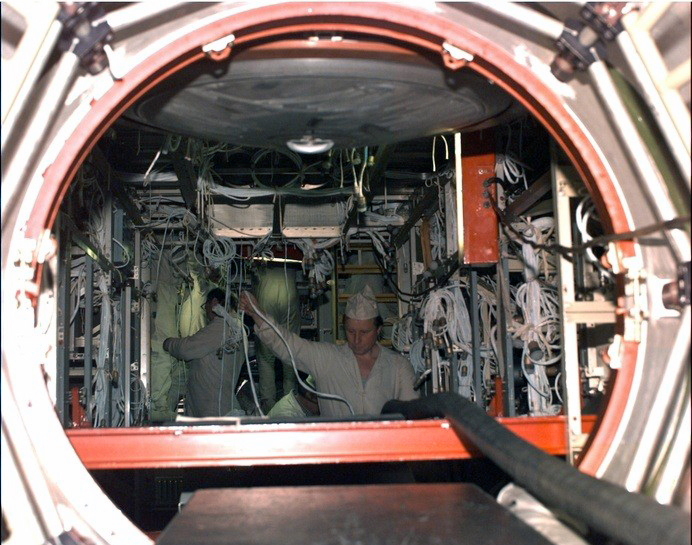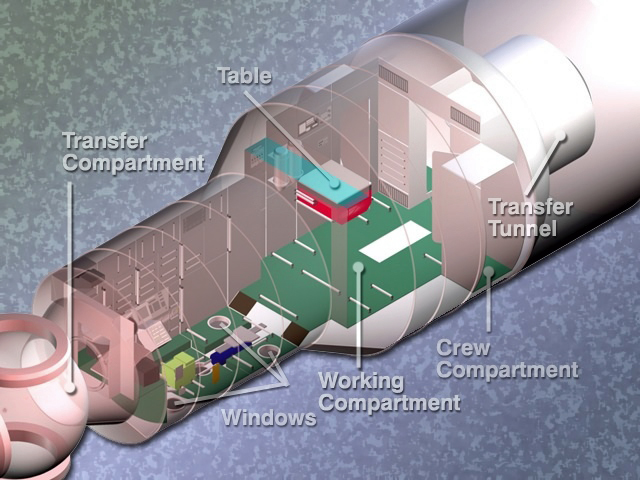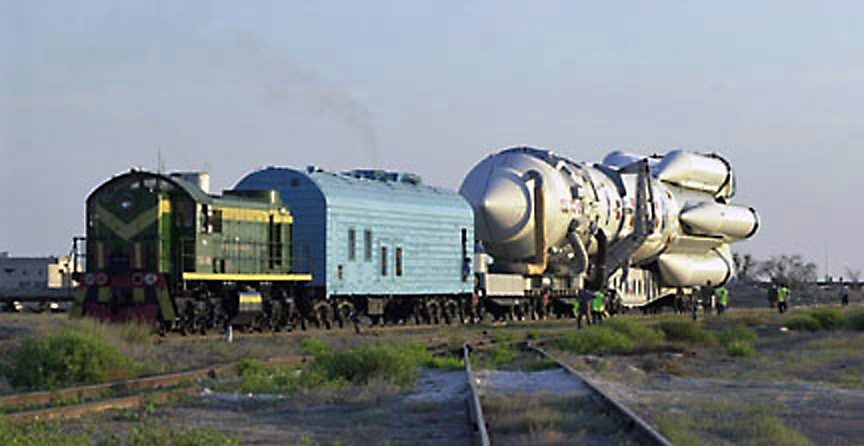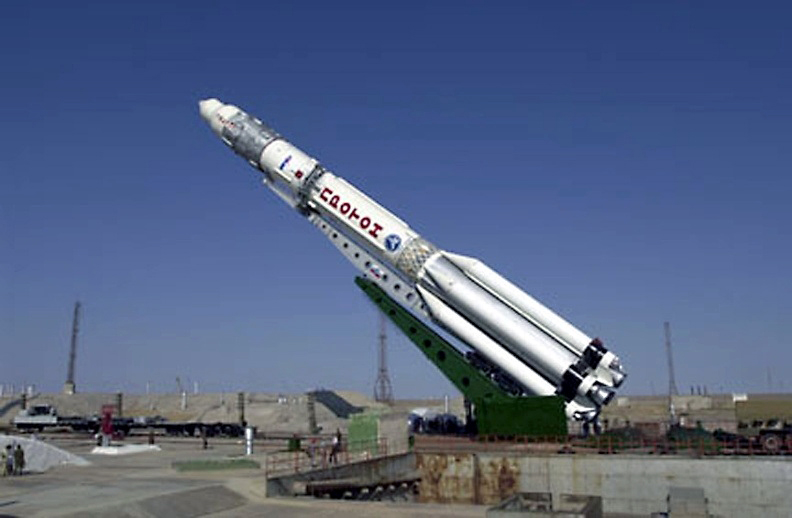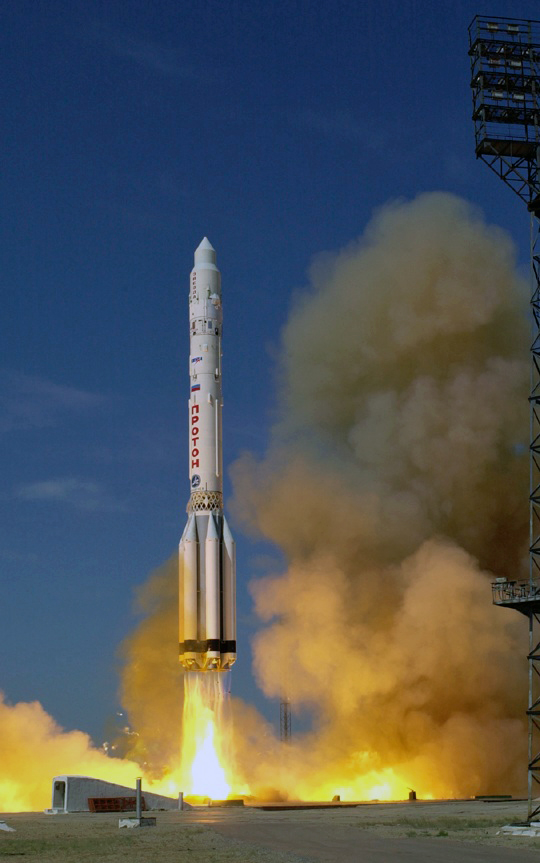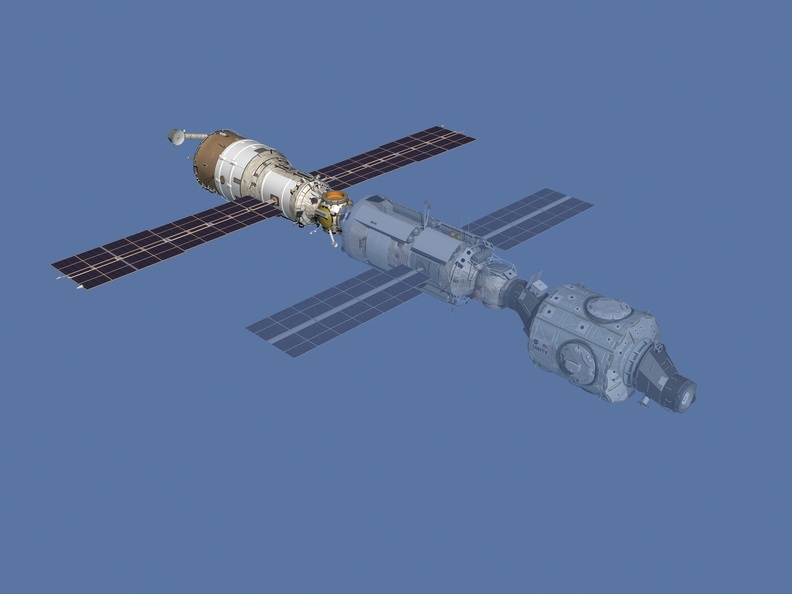Astro Info Service Limited
Information Research Publications Presentations
on the Human Exploration of Space
Established 1982
Incorporation 2003
Company No.4865911
E & OE
Expedition Zero Pt 6
Expedition Zero ISS Operations
Part Six - All About Zvezda
May - September 2000: A Critical Phase
During the summer of 2000, the most important phase of ISS operations since the launch of the first element in November 1998 would take place. The immediate future of the programme and of human space flight for the next decade would rest upon its success. The Zvezda Service Module - the primary Russian station contribution - would be the early living quarters for the resident crews and would provide life support systems to all the attached elements. It would also be the primary docking facility for Progress re-supply vessels, as well as the propulsion and attitude control module to provide re-boost capability for early station operations.
But this all depended upon a successful launch and docking of the module and the preparations for this resulted in many a sleepless night in both Russia and America. If Zvezda failed, there would be a significant delay in permanently occupying the station and perhaps the whole future of the programme would be in jeopardy. With the demise of the Russian Mir station expected within the year, ISS would be the focal point of global human space flight for the foreseeable future.
June - July 2000: Solo ISS Operations
Following the departure of STS-101 at the end of May the station was reported to be in excellent shape, in a new higher orbit of 394 x 370 km (245 x 230 miles) following a 38.5-km (24-mile) boost courtesy of Atlantis before the Shuttle undocked. Having been 'spring cleaned' by the STS-101 crew, the station now had four new batteries installed and 907 kg (2,000 lbs) of additional supplies transferred. This was just part of the increased inventory, which would be completed by STS-106 after the docking of the Service Module, in preparation for the expected arrival of the first resident crew towards the end of the year.
The only issue being tracked was the anomalous readings from three of the ten smoke detectors aboard the station, but with no reports of smoke or fire from the other seven there was no real cause for concern. With the new batteries, the Zarya Control Module was back at full redundancy, ready for the arrival of Zvezda in July.
During the first week of June, flight controllers continued the regular cycling of the batteries and monitored the smoke detectors. They also remote-tested the manual docking system on Zarya. Despite a problem on the ground, the test was deemed successful and a second test of the TORU system was scheduled prior to the arrival of Zvezda. The ground problem was a communications issue that may have prevented some test commands reaching ISS. As the TORU was a back-up to Kurs it was not thought likely to delay the launch of Zvezda and further investigation of the issue would continue in the coming weeks. The hardware supporting the Kurs automatic docking system was also tested in early June. Reports issued in the middle of the month indicated that Kurs remained healthy.
On 20 June, controllers sent commands to ISS to begin transferring onboard propellant to the appropriate fuel tanks in anticipation of the upcoming rendezvous and docking of the Service Module. The procedure was completed by 23 June, with 748 kg (1,650 lbs) of propellant transferred between the tanks on the station. Tests of the Kurs system were completed the following week, together with a run-through of the rendezvous and docking operations.
By the first week of July, management meetings had reviewed the status of Zvezda, while controllers monitoring the station's systems had reported no significant technical issues. However, Battery 1 and its associated electrical component (PTAB1) were disconnected from the remaining battery subsystem as a precaution after controllers reported indications of higher-than-normal discharge rates. This was believed to be an erroneous signal, but they opted not to take any chances so the battery would remain offline until 22 July, when it would be reconnected and charged prior to Zvezda's arrival. All attention now turned to the Baikonur Cosmodrome and efforts to get Zvezda off the launch pad.
June - July: Zvezda Status Reviews
Confidence in the Proton launch vehicle was boosted in early June by the successful launch of the first Proton to use modified second- and third-stage engines of the type to be employed on the Zvezda mission. A second flight of this configuration would take place on 5 July.
On 26 June, Russian management completed the General Design Review at RSC-Energiya, clearing the Zvezda for launch on 12 July. This meeting was attended by NASA managers and representatives from ESA, with the European agency having provided the data management system for the new module. This review was followed by an Operations Readiness Review at NASA JSC in Houston on 29 June, this time with Russian space officials participating by videoconference. This meeting certified the readiness of Zvezda and the status of both the station and the flight control teams in the US and Russia for supporting the flight of the Service Module. The precise launch date would be confirmed by Russian flight controllers the following week, after a final review of Service Module systems undergoing pre-launch preparations at Baikonur.
According to US sources, the Americans were patently waiting for the Russians to deliver the goods as promised with an on-time launch for Zvezda, with the module already over two years behind schedule. Contingency plans had been in place for some months in the event of a launch failure, including a reconfigured US Department of Defense (DoD) upper stage module should Zvezda be lost on its way to orbit.
In the event of a failure of the automated docking system, a Soyuz crew was being prepared to launch to ISS to handle the docking between the elements manually. This crew, termed 'The Zero Crew', was Commander Gennedy Padalka, Flight Engineer Nikolai Budarin and, according to some reports, NASA astronaut Ken Bowersox. In the event, their mission was not required.
July 2000: Zvezda Launch and Docking Operations
Fuelling of the Zvezda at special facilities at Baikonur began on 5 July, a few hours after the successful launch of a Russian military communications satellite on the second modified Proton. Following fuelling, the module was transferred by rail car to the Proton hanger for mating with the launch vehicle. This was completed on 6 July. The next day, the combination was prepared for rail transport to Launch Pad 23 at Baikonur for final launch preparations. Rollout to the pad occurred on 8 July.
At 01:56 Moscow Time (MT; 04:56 GMT), the Proton carrying Zvezda was launched on a flawless ascent to orbit. After separating from the third stage of the Proton at Ground Elapsed Time (GET) 15 minutes, antennas and solar arrays on the module were deployed, with the element funtioning normally in an orbit of 356 x 185 km (221 x 115 miles). With Zvezda safely in orbit, the chase to rendezvous with ISS - planned to take 14 days - could begin. Other activities of the first day in orbit included activation of the Motion Control System and various onboard systems, preparation of the propulsion system, tests of the external black-and-white TV cameras and activation and testing of the star trackers. It was also determined during four ground passes that one of the two docking targets had not deployed. These would only be used if a manual docking was needed and would have no impact on the expected automatic docking. Russian officials believed that the target had, in fact, deployed and that sensors were not recording this correctly.
The Chase Begins
The day after launch, Zvezda's propellant system and thruster jets were test-fired and verified for operational use. Two burns each of just 1 m/sec (3.3 fps) velocity increase were completed, in part for a series of Flight Day 3 (FD 3) orbit-raising burns and as small manoeuvres on the long chase to ISS. Both of the two burns, separated by 45 minutes, increased orbital velocity by about 3 kph (2 mph) and raised the perigee (low point) of the Service Module's orbit by about 5 km (3 miles). Other tests performed on 13 July included verification that the twin solar array drive motors were pointing the arrays towards the sun, enabling them to gather energy to store in the five batteries within Zvezda. These batteries would be supplemented by an additional four delivered by STS-106 in September. To reduce vibrations imparted by the two small burns, the arrays were moved from their normal positions to an edge-on alignment (feathered) and would be returned to sun tracking once the manoeuvres were completed. Further tests of the star trackers and navigation systems were also conducted.
At 09:09 MT on 14 July, the first large rendezvous burn of 16 m/sec (52.5 fps) was initiated using both of the 3,069 Newtons (N; 690 lbs) thrust re-boost engines, raising the orbit to 357 x 183 km (222 x 114 miles). A second burn of 26 m/sec (85 fps) some 45 minutes later raised the orbital parameters to 360 x 269 km (224 x 167 miles). The solar arrays were again feathered to minimise the effects of vibration. The only other activity performed that day was to verify the solar array drive motors in back-up mode. Having analysed the data from the two burns, Russian flight controllers decided that further adjustments to the orbit planned for 15 July would not be required, so the only activity on that day was a test of the Regul telemetry system. Attitude control of the Service Module was being maintained by one manifold of 16 small control thrusters, each producing 129 N (29 lbs) of thrust. The second manifold of 16 engines was not being used.
Three days of low activity had been built into the flight plan for 16-18 July, to allow for any troubleshooting. With Zvezda performing flawlessly, there was little need for anything more than routine checks of the motion control and navigation systems and routine cycling of the battery systems. A test of the black-and-white TV camera was also completed on 17 July, along with tests of the Kurs and Regul systems.
As Zvezda continued its long approach to ISS, docking tests to mimic the final two orbits of the planned automatic rendezvous and docking were performed on the Service Module on 17 July. As a result of the accuracy of the Zvezda re-boost manoeuvres, the control motors on Zarya were only briefly fired twice (approx 1 m/sec or 3.3 fps) to refine the phase angle between the two spacecraft.
While Zvezda and ISS were out of the range of communications during 19 July, Russian and American flight controllers conducted a simulation of the Progress M1 supply craft docking with the station. At the time, the Progress was being prepared for a launch on 6 August and a docking with the station two days later. It was loaded with supplies and equipment for the first resident crew and would be unloaded by the crew of STS-106 in September.
By 24 July, all planned manoeuvres had been completed successfully, aligning the Service Module with the ISS. The day before docking, Zarya was activated as the passive element, with the module performing a series of programmed operations to prepare ISS to accept the latest addition.
26 July 2000: Zvezda Docks to ISS
During the early hours of 26 July, the final sequence of events began with the activation of the Zarya Motion Control System. This was followed by a small manoeuvre by Zvezda into the docking position, activation of the Service Module's rendezvous system, the feathering of the solar arrays and activation of the Kurs automated docking system on Zarya.
Physical docking between Zvezda and Zarya occurred on 26 July at 04:45 MT, with the Service Module closing in on the docking port of Zarya at no more than 0.2 m/sec (0.6 fps). A few minutes after docking, the latches and hooks began activation to seal the mechanical linkage. The ISS was now 36 m (119 ft) long and had an orbital mass of approximately 61,000 kg (60 tons) Shortly after docking, the solar arrays were moved to face the sun. With the 29-m (95-ft) wingspan of the Zvezda arrays, the ISS now became the third brightest object in the night sky (after the Moon and the planet Venus).
Following the docking, Zarya's Motion Control System was deactivated and a valve was opened to pressurise the passageway between the two modules. On 30 July, flight controllers at Korolyov Mission Control in Russia began the critical transfer of command and attitude control of the ISS from Zarya to Zvezda, using part of the ESA command and telemetry system in the Service Module. The successful docking of the Zvezda to the ISS opened the way for the first Expedition Crew to head for the station at the end of October to begin resident operations. Before this could occur, a Progress re-supply vessel was to be launched to the station, followed by the STS-106 Shuttle mission in September and STS-92 in early October.
Systems tests performed in the first week of joint operations included a leak test, routine battery cycling and tests of the automated docking system to accept the Progress re-supply vessel. With ISS functioning well and Zvezda finally attached, all those associated with the ISS programme were relieved that such an important step in the construction of the station had passed without a hitch after so many delays.
This image shows the interior of the Zvezda module during its construction in 1997 and looks towards the aft of the module as viewed from the Transfer Compartment.
This composite cutaway of the interior of Zvezda reveals some of the configuration awaiting the early resident crews. Zvezda provided the early living quarters and key systems and was the major Russian contribution to the fledgling ISS.
The Proton rocket housing the Zvezda Module is transported to the launch pad by rail on 5 July 2000.
On reaching the launch pad, the entire configuration is carefully raised to the vertical from the rail transporter.
Zvezda finally launches from the Baikonur Cosmodrome atop the Proton rocket on 12 July 2000, to begin its flight to orbit and the long chase to rendezvous and dock with the ISS. Multiple delays across the programme had pushed the launch of this critical component of the ISS back by over two years.
The Zvezda Service Module eventually docked to the ISS on 26 July 2000. In its new configuration (as shown in this computer graphic), the ISS measured over 36 m (119 ft) from end to end. The addition of Zvezda meant that final preparations could proceed ready for the arrival of the first resident crew towards the end of the year.



